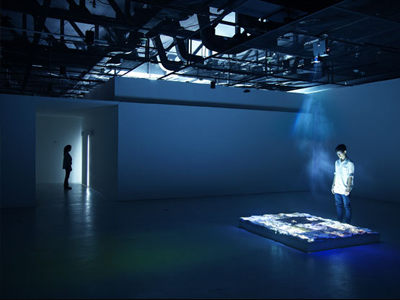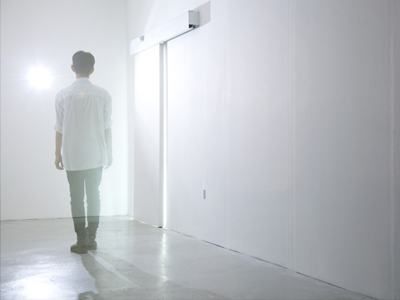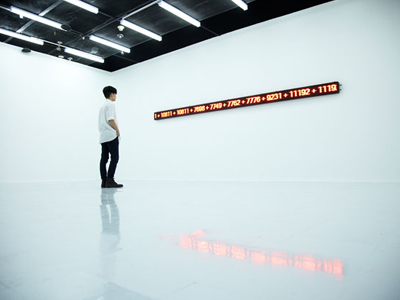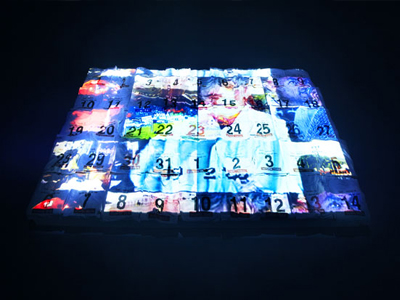(Dis)continuity, 2012
This project intertwines three bodies of work, beginning with "366 Days of Wantanee," completed in 2000 amidst Y2K anxieties, and extending to two recent pieces developed at The Art Center Chulalongkorn University. Visitors entering the exhibition room are greeted by a receiver screen on the floor, which, upon closer inspection, reveals a stack of 366 folded shirts, each marked with dates and details reminiscent of Chinese calendar designs. This stack symbolizes a year—a pivotal period in the artist's life—while the calendar designs reflect her cultural heritage. Wantanee's 12 small screen animations converge into a grand screen, capturing daily moments from 2000.
A dim, dark pathway connects two rooms, where flashing lights momentarily disorient the audience, inviting them to anticipate what lies ahead. In the final room, a serene white ambience surrounds a 5-meter LED panel equipped with a sensor that records visitor numbers and displays the figure of 280,000 Thai bahts—the amount borrowed from banks to produce the work. This setup prompts reflection on the cost of art appreciation per visitor. Given that the average number of visitors at The Art Center ranges from 500 to 1,000, it reveals that the artist essentially pays 500 baht or less per visitor. This piece highlights the financial strains of art production and encourages the public to consider how they might support future generations of artists.
Navigating the complexities of urbanization, politics, and personal identity, Wantanee situates herself as an artist, university lecturer, and individual. The project poetically blurs the lines between past and future, raising questions about what lies ahead. By engaging with capitalism—borrowing money to create art—Wantanee reflects on her life and critiques the inequitable income structures in developing countries, challenging conventional notions of "reality." Her exploration of past, present, and future is poignantly isolated in distinct spaces and times, offering a nuanced examination of temporal and political themes.



